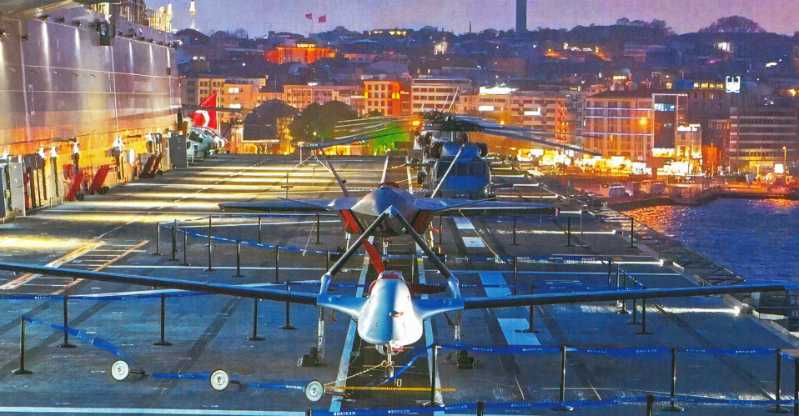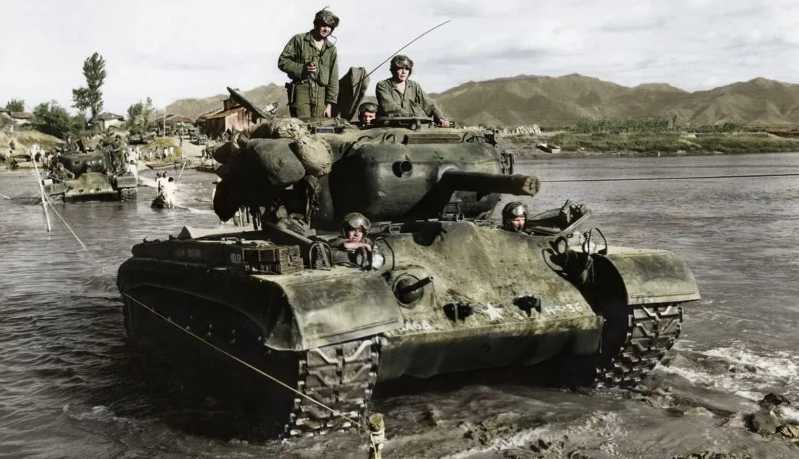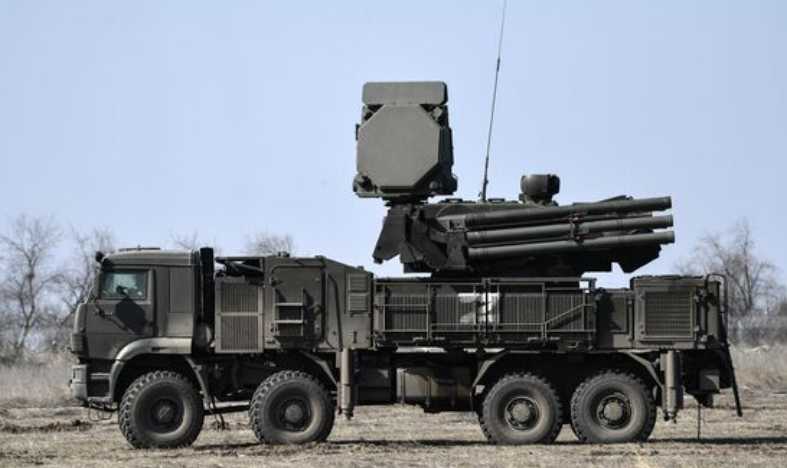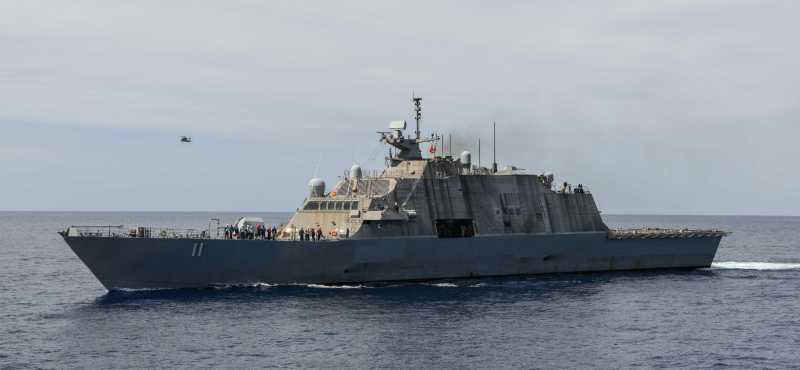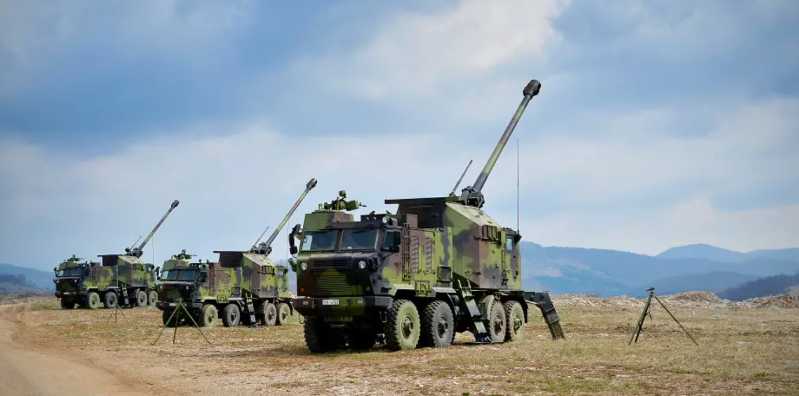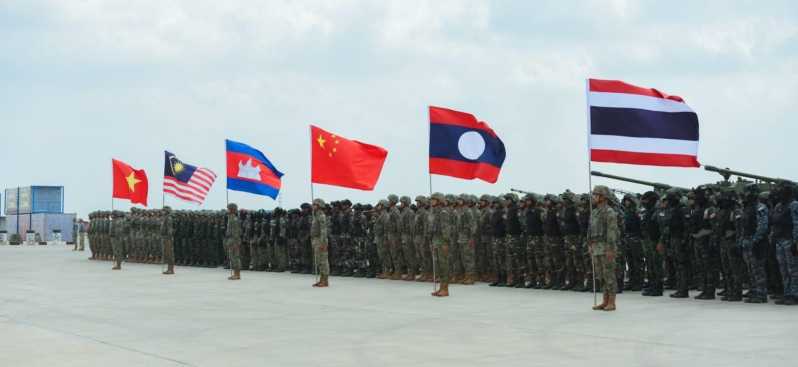Not long ago, on the occasion of the 100th anniversary of the founding of Turkey, the Turkish Baika Company announced that the TB-3 reconnaissance and strike UAV had completed its first flight. As the ship-borne UAV of the "Anadolu" amphibious assault ship, the first flight of the TB-3 UAV has attracted widespread attention from the outside world.
TB-3 ship-borne UAV
It is reported that the TB-3 UAV is improved on the basis of the TB-2 reconnaissance and strike UAV. Everyone is familiar with the TB-2 UAV. In the local conflicts in recent years, Turkey’s TB-2 UAV has performed well on the battlefield and has become the "golden signboard" of Turkey’s military trade products.
The TB-2 reconnaissance and strike UAV is 6.5 meters long, with a wingspan of 12 meters and a maximum take-off weight of 650 kilograms. It uses a 100-horsepower Rotax-912 piston engine as power. Its maximum level flight speed can reach 220 km/h, cruising speed is 130 km/h, maximum communication range is 150 km, practical ceiling is 8,200 meters, endurance can reach 27 hours, and maximum payload is 150 kg.
In terms of body structure, the TB-2 UAV adopts a wing-body fusion layout and an inverted V-shaped tail. The wing-body fusion layout can increase the lift of the body, reduce resistance, and increase the internal volume of the body. The engine is located at the tail and drives a variable pitch two-blade propeller. The TB-2 UAV adopts a modular design, and the main components such as wings and inverted V-shaped tail can be disassembled for easy transportation. The body parts of the TB-2 UAV are mainly made of carbon fiber composite materials, and the important structural frame is made of aluminum alloy. The body structure is reliable and has good flight performance and stealth performance. In terms of avionics equipment, the TB-2 UAV is equipped with a multi-spectral optoelectronic reconnaissance system at the rear of the fuselage, which can be used to monitor ground targets and perform reconnaissance missions. All payload and telemetry data are recorded on the onboard data recorder and transmitted back in real time. The avionics equipment of the TB-2 UAV is powered by an AC generator and lithium-ion batteries, and can work continuously for a long time.
In terms of the flight control system, the TB-2 UAV uses a three-digital flight control system, which can achieve autonomous takeoff, cruising, landing and taxiing without external remote control. The flight control system can receive the measurement data of the onboard sensors in real time, and process it through the onboard computer to obtain the flight attitude adjustment instructions, and transmit them to the actuator to complete the automatic adjustment of the flight attitude. The Turks have programmed the flight control system, and if necessary, the UAV can choose the nearest airport to make an emergency landing. Its flight control system can continue to navigate and achieve autonomous takeoff and landing even in the absence of GPS signals.
Each TB-2 combat unit includes 6 UAVs, 2 ground control stations, 3 ground data terminals, 2 remote video terminals and some other ground support equipment. Among them, the ground mobile station of the TB-2 UAV is designed based on NATO standards. One ground mobile station can control three TB-2 drones at the same time. Each ground mobile station requires three members: a drone pilot, a payload operator, and a mission commander. The ground station is equipped with air conditioning and gas filtration devices, and has certain chemical defense capabilities. Each member has a double screen in front of him to receive real-time commands and monitor drones.
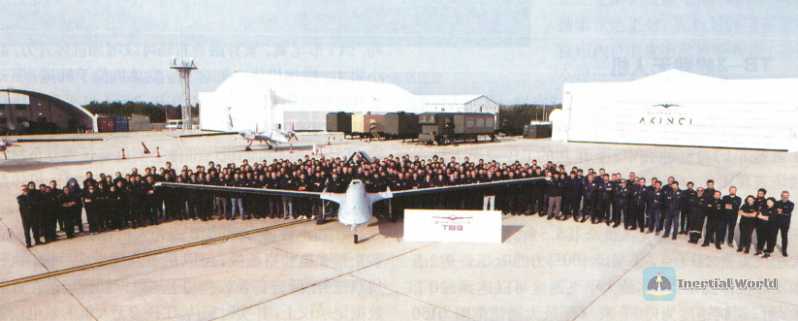
In terms of weapons and equipment, the TB-2 drone has four weapon pylons and can carry up to four laser-guided precision strike ammunition, which is very effective in striking heavy ground weapons and equipment. The main weapons and ammunition are UMTAS anti-tank missiles. The UMTAS anti-tank missile was originally a supporting weapon specially developed for the T-129 armed helicopter, mainly used to attack various tanks and armored vehicles. Later, after improvements, the UMTAS anti-tank missile can be integrated into various platforms including helicopters, drones, tanks and armored vehicles, light attack aircraft, and warships. The UMTAS anti-tank missile is 1750 mm long, 160 mm in diameter and weighs 37.5 kg. The UMTAS anti-tank missile uses a tandem armor-piercing warhead, which can effectively attack armored targets. In terms of guidance, the UMTAS missile generally uses an infrared imaging seeker or a laser guidance seeker. The range of the UMTAS anti-tank missile is 500-8000 meters and can be used all-weather. The TB-2 UAV can carry a UMTAS anti-tank missile under each wing.
On December 17, 2015, the UMTAS anti-tank missile dedicated to the TB-2 UAV successfully passed the test. During the test, the TB-2 UAV launched a UMTAS anti-tank missile at an altitude of 5000 meters. The missile successfully hit a 2x2 meter target board 8 kilometers away. Since 2016, the UMTAS anti-tank missile dedicated to the TB-2 UAV has begun mass production. Later, the types of weapons that the TB-2 UAV can use have become more abundant. In addition to the UMTAS anti-tank missile, the TB-2 UAV can also carry laser-guided bombs, such as MAM-L, MAM-C laser-guided bombs, "smart micro-munitions" (SMM), etc. It is reported that the ammunition is a new type of laser-guided gliding ammunition that combines the UMTAS anti-tank missile and the Cirit laser-guided rocket technology. It integrates the searcher on the Cirit guided rocket and the warhead of the UMTAS missile, but removes the rocket engine on the missile, which can achieve "fire and forget", which can greatly enhance the combat capability of the TB-2 UAV.
The TB-3 shipborne UAV began to be developed in 2015. As early as the construction of the "Anadolu" amphibious assault ship, Turkey began the development plan of the TB-3 shipborne UAV. On April 27, 2023, the TB-3 shipborne UAV made its debut at TEKNOFEST2023 in Turkey. On October 27, 2023, Turkey’s Baykar Company stated that the TB-3 UAV held its first flight ceremony. The test was conducted at the Corlu Flight Training and Test Center in northwestern Turkey. After the preliminary rapid taxiing test and take-off and landing test, the drone stayed in the air for about 2 hours during its first flight. Baykar’s chief technology officer said on his social media account that "On the occasion of the 100th anniversary of the founding of the Republic of Turkey, the Bayraktar TB-3 drone successfully completed its first flight," and Baykar employees took a photo with the TB-3.
The TB-3 drone is the world’s first reconnaissance and strike drone that can take off and land on the shorter flight deck of an amphibious assault ship. Compared with the TB-2 drone, it has the following improvements:
First, the size is increased. The TB-3 drone has a wingspan of 14 meters, a length of 8.35 meters, a height of 2.6 meters, and a maximum take-off weight of 1,450 kilograms. For shipboard use, the aircraft is specially designed with hinged folding wings that can be folded at an angle of more than 160 degrees to reduce parking space, and the landing gear has also been strengthened to meet the requirements of ski-jump take-off. At the same time, the fuselage has also been specifically improved to prevent corrosion in order to adapt to the high temperature, high humidity and high salt environment at sea.
Secondly, the new engine has been replaced, and the flight speed and load have been upgraded. The TB-3 UAV has been replaced with a 2.1-liter heavy oil four-cylinder water-cooled inline supercharged 172-horsepower PD170 engine and a three-blade propeller from Turkey’s TEI company. The maximum speed is 160 knots/296 kilometers/hour, the cruising speed is 125 knots/231 kilometers/hour, and the station endurance time exceeds 24 hours. The maximum usable ceiling is 9144 meters, and the maximum mission radius is 2200 kilometers at 6096 meters. The maximum take-off weight is 1.45 tons, and the payload capacity is 280 kilograms.
Third, the electronic system has been greatly improved. TB-3 is scheduled to use the CATS optoelectronic turret of Turkey’s ASELSAN company, which has a diameter of 43.7 cm, a height of 52 cm, and a weight of 61 kg. It can rotate 360 degrees horizontally and can freely pitch between +10 degrees and -105 degrees when hoisted. CATS can carry more than 7 sensors, which are housed in 4 optical windows. The infrared band sensor can provide 640x512 pixel images, and the color TV can provide full HD 1980x1080 pixel images. The available field of view of both can be in four levels of 0.5°-0.9°-3.2°-30°, and non-continuous zoom switching can be performed between 1, 10, 33 and 60 times; the low-light band sensor is 640x480 and can only be used at the maximum magnification of 0.5°, about 60 times. The laser ranging range is 25 kilometers.
TB-3 UAV communication can adopt beyond-line-of-sight data link transmission. Its nose is raised, and Ctech’s Sky ARX Ku-18 airborne satellite communication antenna is installed inside. It is equipped with a 45.72 cm antenna and light equipment. It is relatively easy to install. The modem can be located at any distance from the antenna. It is powered by 28VDC. The satellite communication terminal uses integrated technology and powerful waveforms to provide a return link of up to 20Mbps and a forward link streaming data transmission rate of up to 10Mbps. It uses AES encryption to protect IP traffic and can achieve accurate satellite tracking of 0.2°RMS at an altitude of 30,000 feet. The operating temperature of the terminal is -40° to +55°C, the storage temperature is -55° to +70°C, the weight is 16 kg, the airborne modem power is less than 70W, the weight is 5 kg, the size is 312x261x133mm, and the antenna control unit power is less than 300W. Its upload frequency is 13.75 to 14.50 GHZ, and its download frequency is 10.95 to 12.75 GHZ. It has modulation and forward error correction, and variable coding and modulation capabilities for forward/return links. The antenna can provide IP communications on the move, can send real-time, full-motion HD video in the air, conduct secure data communications, and perform mission-critical communications during flight.
Finally, the weapon mounting capacity has been greatly improved. The weapon attachment points under the wings of the TB-3 UAV have increased from 4 to 6, which can carry precision-guided bombs, laser-guided rockets, surface-to-air missiles, and gliding bombs, etc., with high strike accuracy. In the future, it may also carry anti-ship weapons or airdropped sonar buoys, etc.
Turkish UAVs currently mainly carry the MAM series precision-guided bombs developed by the domestic Roketsan company, which mainly include three different models, namely MAM-C, MAM-L, and the latest developed MAM-T. Among them, MAM-C is an unpowered gliding guided bomb with a total mass of 6.5 kg, carrying a 2.5 kg multi-purpose high-explosive fragmentation warhead, using semi-active laser guidance technology, and a maximum range of less than 8 kilometers. MAM-L uses the body and guidance technology of the L-UMTAS anti-tank missile. The body is thicker, with a diameter of 160 mm, a length of 1 meter, and a weight of 22 kg. It uses an inertial navigation system (INS) + GPS mid-course guidance system and semi-active laser terminal guidance, and the maximum range is increased to 15 kilometers. It has the ability to destroy heavy armored targets such as tanks, and has a greater killing ability against clustered targets.
The MAM-T guided bomb is a precision-guided bomb newly developed by Roketsan for the Turkish "Raider" large reconnaissance and strike integrated drone. Its body has a maximum diameter of 230 mm, a total length of 1.4 meters, and a weight of 94 kg. The TB-2 drone can only carry 150 kg of weapons and cannot carry MAM-T precision-guided bombs, while the TB-3 has a much larger payload and is expected to carry such weapons to enhance its strike capability. The deployment of MAM-T will greatly increase the strike range of Turkish drones. After the TB-3 is equipped with MAM-T, it can attack enemy personnel, vehicles, ships, etc. from 30 kilometers away.
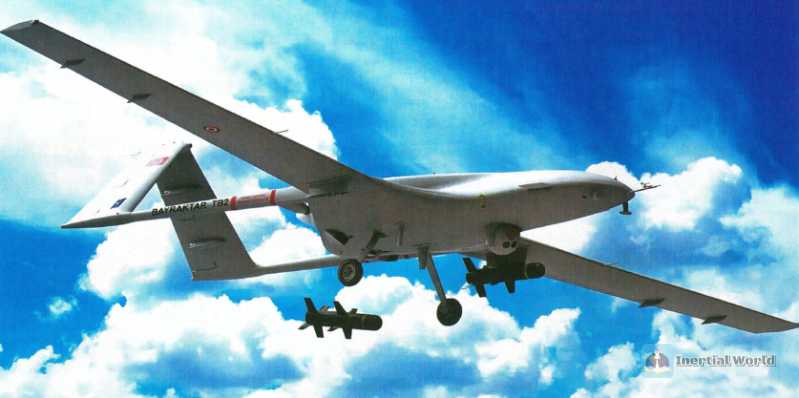

Developed specifically for the "Anadolu" amphibious assault ship
"Anadolu" is a new multi-purpose amphibious assault ship developed by Turkey, which was built around 2015. On June 1, 2015, the Turkish Navy and Sedef Shipyard officially signed a contract to purchase and build the "Anadolu" amphibious assault ship. On February 7, 2018, the keel of the Turkish Navy’s "Anadolu" amphibious assault ship was laid at Sedef Shipyard in Istanbul. The "Anadolu" began laying the keel in 2018 and was officially launched in 2019. It was originally planned to be put into service in 2021, but it was postponed to 2023 due to technical reasons. On April 10, 2023, the "Anadolu" multi-purpose amphibious assault ship was officially delivered to the Turkish Navy. The delivery ceremony was held at the Sedef Shipyard in Turkey. Turkish President Erdogan attended the delivery ceremony and delivered a speech. He pointed out that the construction of the "Anadolu" reflects the capabilities of Turkey’s defense industry. 70% of the ship is built with Turkish domestic parts, including its weapons, combat systems, radar and infrared search and tracking systems, and electronic warfare kits. Erdogan also said that the service of the ship will enable Turkey to carry out military and humanitarian operations in any corner of the world, which is a symbol of consolidating Turkey’s regional leadership.
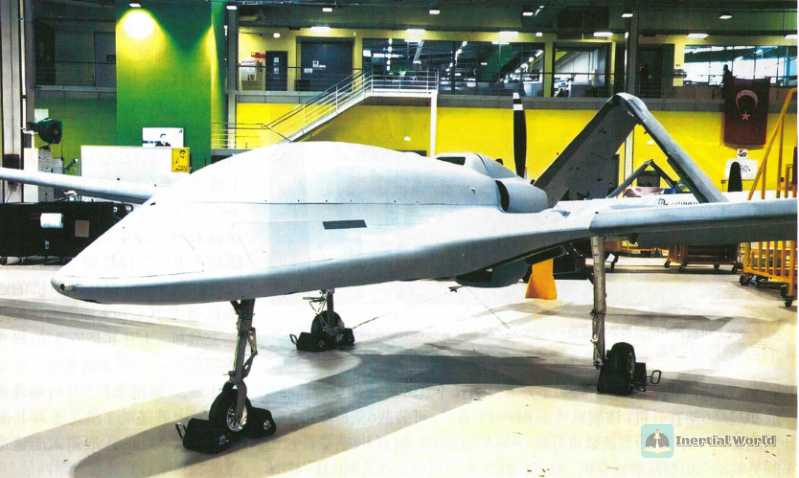
The "Anadolu" amphibious assault ship is designed based on the "Juan Carlos I" prototype. It is built by Turkey’s Sedef Shipyard, and Navantia Group provides technical guidance and assistance. From the overall appearance, the "Anadolu" adopts the ship type of an aircraft carrier, but retains the high freeboard design unique to amphibious landing ships. It adopts a full-deck design. The bow deck is a 12-degree upward ski-jump take-off deck. The right midship on the deck is the ship island. The lower level is the hangar and light garage level. Below the hangar and light garage level are the heavy garage and the stern submerged dock. The ship island has strong stealth performance. The second floor of the ship island is the cockpit, with 3 masts (equipped with radar and antennas, etc.) and 1 chimney.
The "Anadolu" amphibious assault ship has both dock landing ship and light aircraft carrier combat functions. Its displacement is different in the two navigation modes. The light aircraft carrier mode displacement is 24,660 tons, and the amphibious assault ship mode displacement is 27,079 tons. The ship is 232 meters long, 32 meters wide, and has a draft of 6.9 meters. It is equipped with 5 German MAN Group diesel engines, each with an output power of 8 MW; 2 German Siemens omnidirectional propellers (required power 11 MW), and 2 bow thrusters (required power 1.5 MW); the normal speed is 21.5 knots, the maximum speed is 29 knots; the range without refueling is 9,000 nautical miles/15 knots; the crew is 261 people (including 30 officers, 49 non-commissioned officers, and 182 soldiers).

According to the information released by the Turkish Ministry of Defense, the stern dock of the "Anadolu" amphibious assault ship can accommodate 2 air cushion landing craft or 4 mechanized landing craft, and the vehicle deck can carry 13 tanks, 27 armored amphibious assault vehicles, 6 armored personnel carriers and 15 trailers and other types of land warfare equipment. The ship is equipped with stabilizing fins on both sides of the hull. This design enables the dock at the stern to retract and deploy landing vehicles in level 4 sea conditions, which is conducive to flat landing operations under harsh conditions. In addition, the medical support conditions of the "Anadolu" amphibious assault ship are also good. There is a shipboard hospital at the bottom of the ship, equipped with ambulances and other medical equipment, including operating rooms and various examination and treatment rooms and several wards, which greatly improves the battlefield rescue capabilities of amphibious operations.

The flight deck area of the ship reaches 5,440 square meters, with 6 helicopter landing and take-off points, which can park and land 6 helicopters at the same time; the hangar area of the ship is 990 square meters, which can carry 6 F-35B (originally planned configuration), 4 T-129 armed helicopters, 8 AS532 transport helicopters, and 2 US-made S-70B anti-submarine helicopters of the Turkish Navy. According to combat needs, US-made CH-47 heavy transport helicopters can also be deployed.
The self-defense weapons of the "Anadolu" amphibious assault ship include 5 25mm caliber remote-controlled naval gun systems of the Turkish Military Electronics Industry Corporation, 2 General Dynamics "Phalanx" close-in weapon systems, and 1 MK49 launch system (equipped with 21 Raytheon "RAM" air defense missiles), which have strong self-defense capabilities. Among them, the 25mm caliber remote-controlled naval gun system is a new generation of economical multi-functional weapon system of the Turkish Navy. It consists of a dual-axis stabilized turret, a 25mm KBA or M242 "Viper" machine gun, an optoelectronic sensor assembly and a fire control system. It can capture, identify and track static or moving targets through the ship-borne combat management system or its own optoelectronic sensors, and perform day and night all-weather strike missions.
It is worth mentioning that the reason why the Turkish Navy chose to design the "Anadolu" amphibious assault ship based on the Spanish "Juan Carlos I" was mainly because the ship took into account the function of a light aircraft carrier, and the design of the ski-jump take-off deck fully reflects this feature. In terms of the choice of carrier-based aircraft, Turkey actually initially chose the F-35 fighter. Turkey is one of the co-developers of the F-35, and there was a huge procurement plan from the beginning. The "Anadolu" amphibious assault ship was actually built to meet the operational needs of the Turkish Navy to take off and land the F-35B.
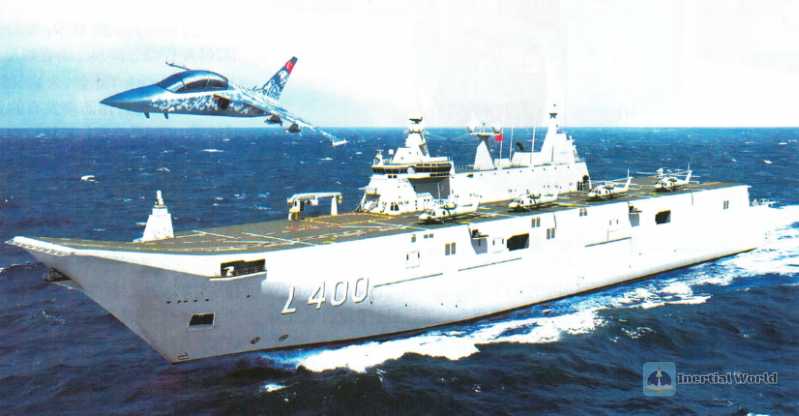
But in April 2021, Turkey was kicked out of the F-35 project, and their plan to purchase the F-35B came to nothing. Seeing that the "Anadolu" amphibious assault ship had no suitable carrier-based aircraft available, Turkey began to study the integration of drones into the "Anadolu", and the TB-3 ship-borne reconnaissance and strike drone came into being.
TB-3 will be mainly used for intelligence, surveillance and reconnaissance (ISR) operations. It has beyond-line-of-sight communication capabilities, which can expand the field of vision of the "Anadolu" amphibious assault ship to the vast ocean. Its ability to carry various modular systems also makes it an ideal communication relay platform. The TB-3’s short takeoff and landing (STOL) capability makes it ideal for aircraft carriers as well as large-deck amphibious assault ships. The ability to conduct short takeoffs and landings also extends the drone’s combat capabilities to small, remote airstrips on shore, providing the Turkish military with greater flexibility in land-based operations.
This maiden flight ceremony is an important step in the integration of the TB-3 with the Anadolu amphibious assault ship. Subsequent testing will continue at Kesan and then move to a land-based platform simulating the flight deck of the Anadolu amphibious assault ship. Baykar expects the TB-3 to enter full-scale production in 2024, and the Anadolu amphibious assault ship is expected to enable the TB-3 to achieve historic takeoff and landing operations. Of course, the Anadolu must be modified with the TB-3’s drone control station with a satellite terminal to enable the TB-3’s remote control operations.
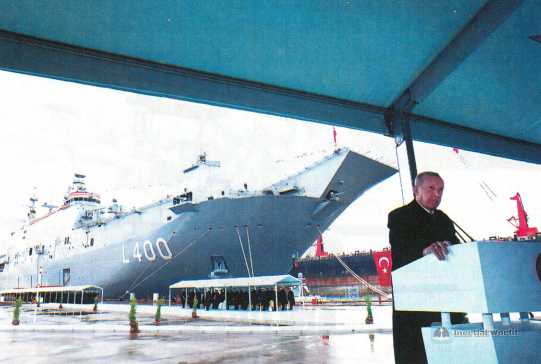
In addition to the TB-3 drone, Turkey has also prepared another drone for it, the MIUS stealth drone. Compared with the TB-3 drone, the MIUS drone is much larger in size and is close to a light fighter. It is reported that the aircraft is 14 meters long and has a wingspan of 9.7 meters, a maximum take-off weight of about 8.5 tons, and a payload of 1.5 tons. The aircraft can fly at a cruising speed of 0.6 Mach for 5 hours, a maximum speed of 0.9 Mach, a maximum ceiling of 10,000 meters, and a combat radius of 500 nautical miles.
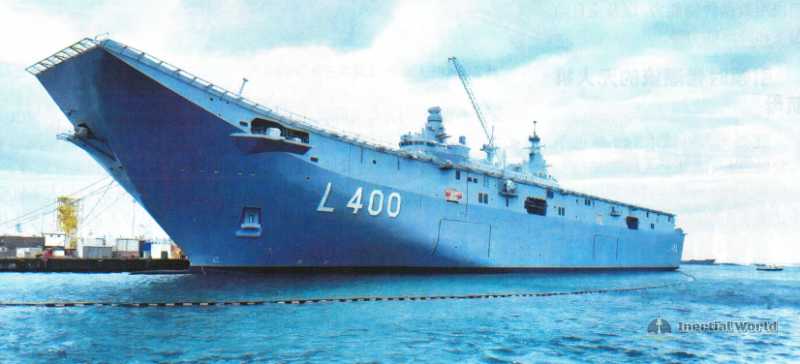
The appearance design of the MIUS drone also has distinctive characteristics. It adopts a canard layout, a large aspect ratio cut-tip delta wing, a small wing sweep angle, and a V-shaped vertical tail. These designs are to improve take-off and landing performance and minimize the take-off and landing distance, but the disadvantage is that the flight speed is not fast. It also adopts a more fashionable stealth design, with sharp edges and corners in the nose, a smooth transition between the wing and the fuselage, and canards parallel to the wings. It is said that it also uses an internal weapon bay, which helps to reduce its radar cross-sectional area.
The aircraft can carry Turkey’s independently developed precision-guided munitions, air-to-air missiles and cruise missiles, and perform a variety of military tasks, such as air-to-air and air-to-ground combat, air defense escort, close air support, reconnaissance and intelligence, suppression of enemy air defense systems and destruction of enemy air defense systems. The aircraft also uses Turkey’s domestically produced active phased array radar, with over-the-horizon data transmission capabilities, as well as fully automatic take-off and landing capabilities.
UAV aircraft carriers that lead the trend of the times
With the continuous progress and development of drone technology and the excellent performance of land-based drones on the battlefield, the idea of deploying drones on aircraft carriers and other surface ships to replace manned aircraft to perform some dangerous tasks has been recognized by many countries, making ship-borne drones a new development trend. Countries are conducting research and experiments in this area, such as China, the United States, and the United Kingdom.
Compared with ship-borne helicopters and fixed-wing fighters, ship-borne drones have many advantages. First, good stealth performance. The current mainstream drones all adopt a tailless flying wing layout. This design itself can greatly reduce the radar signal characteristics. Good stealth performance is its "innate" advantage. The fourth-generation fighter mainly adopts a conventional layout, and must be stealthed through technologies such as parallel fuselage edges, S-shaped air inlets, built-in weapon bays, and external absorbing coatings. Secondly, save space and cost. In manned aircraft, the pilot and his activity space account for 20% of the total aircraft space, and the cost of the auxiliary systems required by the pilot accounts for 45% of the total aircraft cost. After being unmanned, the manufacturing cost can be effectively reduced, and the saved space and weight can carry more fuel and weapons.

Third, there is no need to consider the physiological limits of pilots. Since drones do not have pilots, they can perform missions in the air for a long time. Manned aircraft can stay in the air for up to 10 hours, while the Global Hawk can continue to perform high-altitude flights for more than 35 hours in harsh environments. In addition, the human body can only withstand 9G overloads at most. Usually, more than 6G may cause the pilot to have black vision or temporary blindness. However, drones can even increase to 20G standards during air combat maneuvers, and can get rid of air-to-air missile pursuit without interference and only use maneuvers.
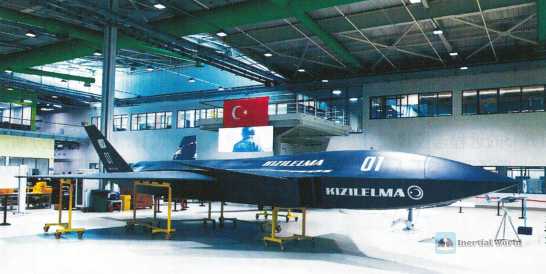
Finally, the use and maintenance costs are low. After the drone is manufactured, it does not require frequent maintenance and training, and can be stored for a long time like tactical missiles. During the safe storage period, the drone does not require maintenance or consume resources, and has an absolute advantage in the use cost of the entire life cycle that manned aircraft cannot match. It is worth mentioning that the training difficulty of carrier-based drone operators is much lower than that of carrier-based aircraft pilots, commonly known as "knife-tip dancers", and the number of technical maintenance personnel is also less than that of complex traditional carrier-based aircraft. This not only effectively reduces the cost of pilot training and daily maintenance, but also basically eliminates the possibility of pilots being captured. This advantage is also beyond the reach of traditional aircraft carriers.
Therefore, compared with traditional carrier-based aircraft of the same tonnage, carrier-based drones have stronger strike capabilities, combat radius and endurance time. In addition, the design constraints of ship-borne drones are fewer, the structure is simpler, and the size of the fuselage is significantly reduced, which is undoubtedly a huge advantage on aircraft carriers where every inch of land is valuable.
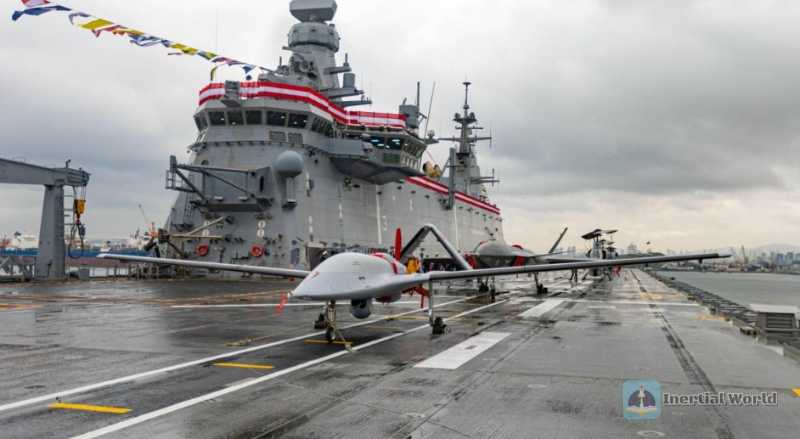
And amphibious assault ships such as the "Anadolu" can undoubtedly carry a large number of large-scale drones, just like a "drone carrier". A large number of drones can be widely used in intelligence reconnaissance, battlefield surveillance, communication relay, electronic interference, firepower strikes, battle damage assessment, simulation training and other aspects. They can effectively make up for the shortcomings of manned helicopters and carry out various tasks. They are of great significance to improving the combat capability of the Turkish Navy. In fact, many military observers are curious about the details of the deployment and operation of drones on the "Anadolu" amphibious assault ship, and believe that it will open up a new path for future maritime operations in a certain sense.
is of great significance. In fact, many military observers are curious about the details of the deployment and operation of drones on the "Anadolu" amphibious assault ship, and believe that it will, in a certain sense, open up a new path for future maritime operations.
Of course, for the Turkish Navy, which lacks experience in carrier-based aircraft take-off and landing, it is not easy to achieve safe take-off and landing of drones on the flight deck. Turkey’s domestically produced drones still face some challenges and need to be further upgraded to adapt to maritime operations. The "Anadolu", which has just been commissioned, must continue to improve the problems found in the test in order to safely operate drones. Foreign media believe that this may take several years. Despite this, Turkey is still preparing to put the "drone carrier" into service by 2025. Obviously, this is another major move by the country to seize the commanding heights of military technology.


